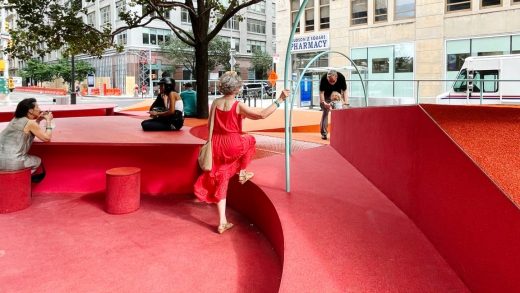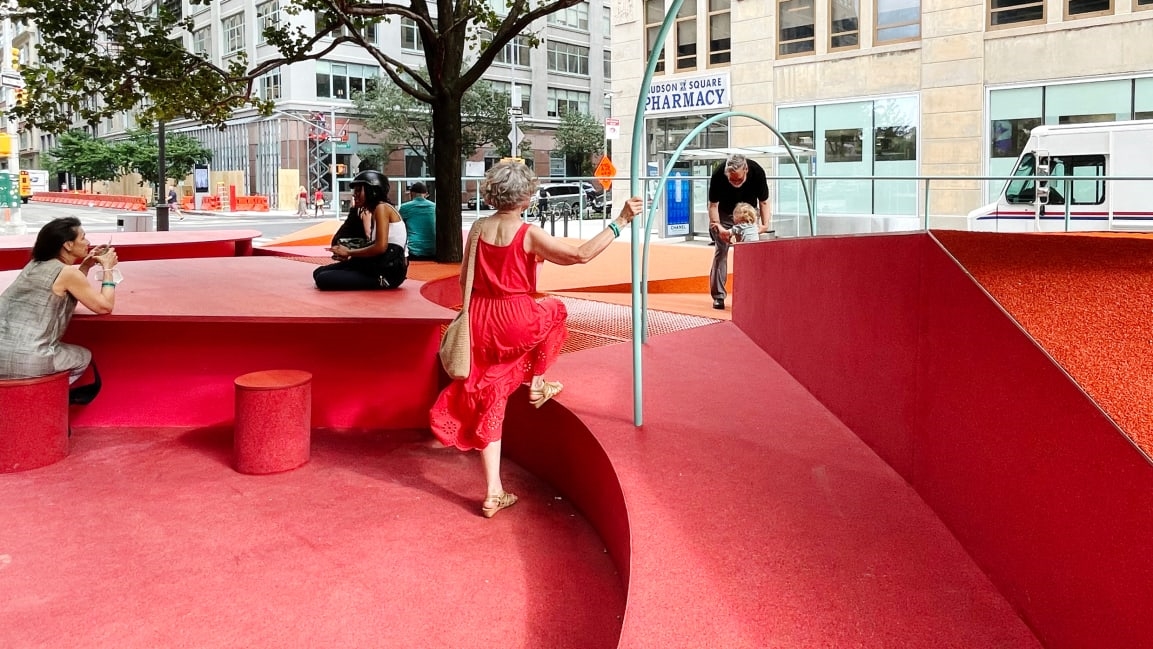How cities can be redesigned for neurodiversity
We are living in a time of increased awareness about neurodiversity. One in 54 children has been diagnosed with autism, and the World Health Organization estimates that one in eight people in the world is neurodiverse, and with many of these conditions considered hard to diagnose, the number is likely higher. Yet, cities are still failing to reflect that diversity.
In Hudson Square—a tiny pocket of Manhattan once known as the Printing District and nestled between Soho, Tribeca, and the West Village—a new public space seeks to tip the scales in a more inclusive direction. Designed by WIP Collaborative, a feminist collective made up of independent design professionals, the temporary public art installation, dubbed “Restorative Ground” provides a supportive gathering space for people of all ages, backgrounds, and spectrums of neurodiversity.
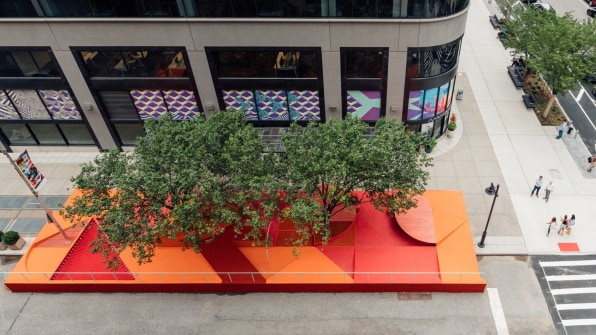
By catering to a range of experiences, activities, and interactions, “Restorative Ground” offers a new vision for inclusive public space that draws on the architects’ research into design for neurodiverse populations. In the process, it provides a useful model for rethinking cities to better accommodate neurodiversity.
Coined in the late 1990s by Judy Singer, an Australian sociologist who has Autism, neurodiversity refers to the idea that certain developmental disorders like Autism Spectrum Disorder (ASD), Attention Deficit Hyperactivity Disorder (ADHD), and Dyslexia are normal variations in the brain. In other words, neurodiversity is about the different ways we think, communicate, and see the world.
Born in mid-2020, out of a call for entries to reactivate the public realm with an installation in Hudson Square, Restorative Ground builds on research by WIP Collaborative that investigates how cities and public spaces can be designed to better serve neurodiverse populations.
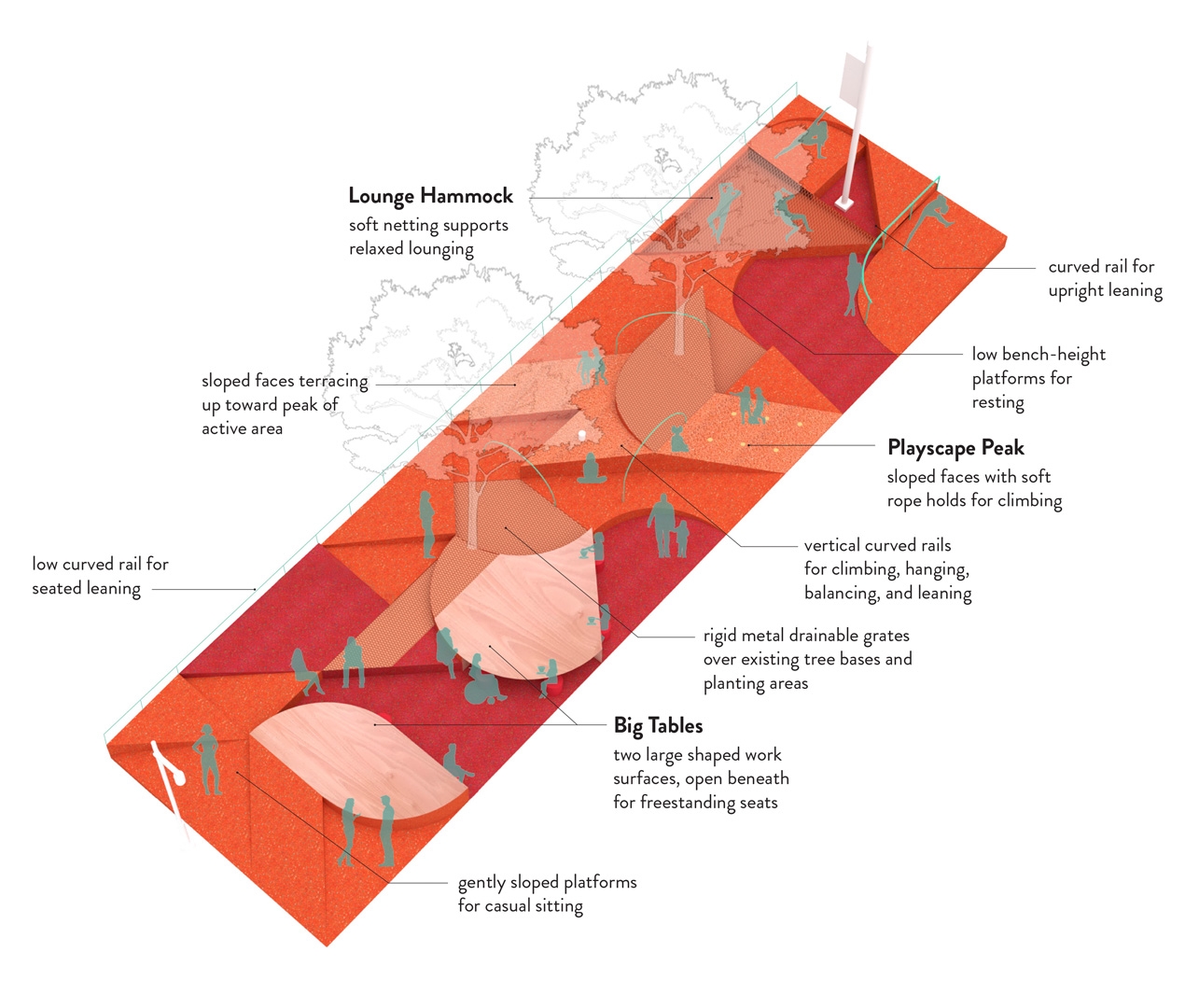
Equal parts playground, lounging area, and gathering space, the streetscape installation straddles the sidewalk and parking lane on King Street. “It’s the product of public space typologies that emerged from pandemic,” says Lindsay Harkema, an architect and founder of WIP (which stands for Work in Progress).
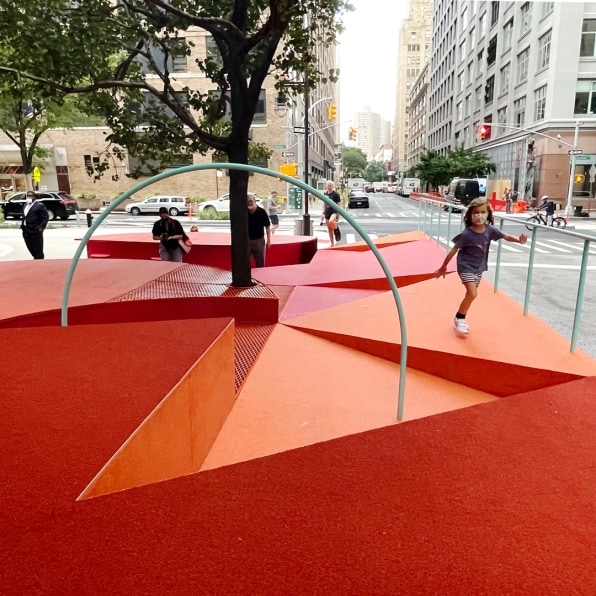
Made up of separate modules, each of them big enough to allow for social distancing, the space provides a range of spatial qualities divided across three main zones: a focus area with a large table where older people can sit and read a book or children can engage in various youth programs; an active zone with a sloped playscape and rope holds for climbing; and a restful zone with a hammock and low benches.
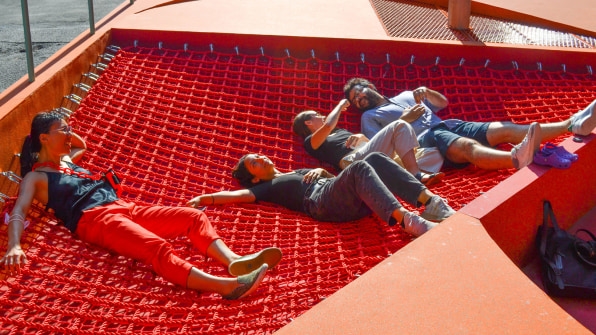
“Designing for neurodiversity necessitates having different kinds of spaces available to individuals,” Harkema says, explaining that empty plazas are too bare and chaotic playgrounds are overstimulating. “We’re creating space where you have a choice of different experiences.”
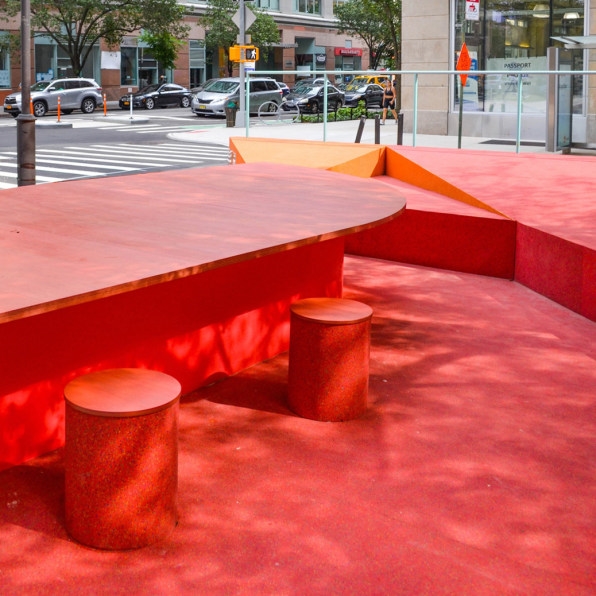
This range of experiences is equally important with material finishes, which Harkema explains “produce different sensory experiences.” The base material throughout is recycled rubber often found in play spaces for its cushioning properties and resilience. Then there are accent materials: The table is made of plywood stained red to go with the rubber, itself a vibrant shade of orange. In the active zone, artificial turf provides a “grippy” texture you can lean against or climb, and in the calm zone, the netted hammock supports people lounging. Throughout, the space is made of peaks and valleys, highs and lows that provide balanced stimulation and help define a multitude of different micro areas at once.
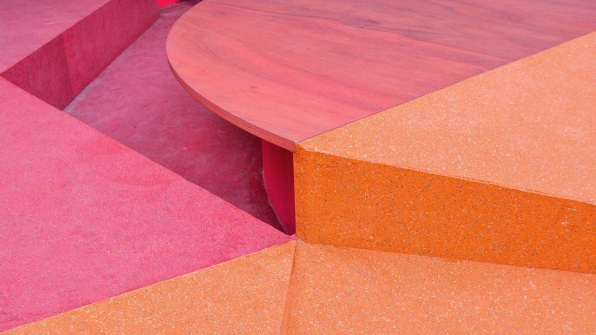
In early 2020, WIP Collaborative conducted interviews with a dozen experts and advocates on neurodiversity, including people with children with autism, and organizations like the Global Autism Project—a nonprofit that helps individuals around the world support and care for children with autism. Harkema says WIP Collective is now “working to scale it up and do more systematic research,” but in the meantime, initial research has highlighted the importance of diverse environments like high and low stimulation, tactile materials, textures, and distinct experiential zones.
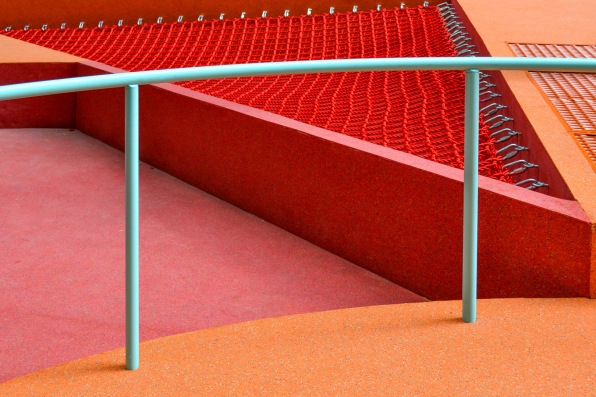
“What we’ve learned is that providing choice to people, in terms of the spaces they occupy in the public realm, is a means of giving everyone an opportunity for representation,” says Harkema, who, on her last visit in late July, observed a group of children playing right next to a duo of teenage skateboarders. “It was remarkable that these people were occupying the same space and to me, that’s really exciting to see.”
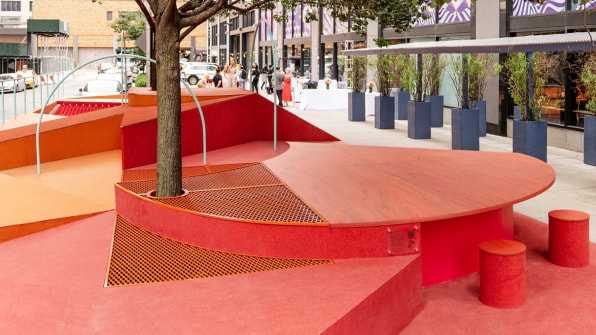
Harkema explains that the space was accessible to everyone because it has specific qualities for all age groups. “Children might need a space to climb, older people might need a space to rest, and people with different sensory sensibilities could find a space that is more sheltered and calm or more active and stimulating depending on how they feel,” she says.
In New York City and elsewhere, people without children are specifically prohibited from playgrounds, and while research tells us that interactions between older people and children have positive effects for both groups, opportunities for such interactions in the public realm are slim. “The way we were approaching this project is that we can learn from populations with challenges and be inspired by them,” Harkema says, “and when you provide them in this range it becomes more flexible for the broader populations.”
(25)

